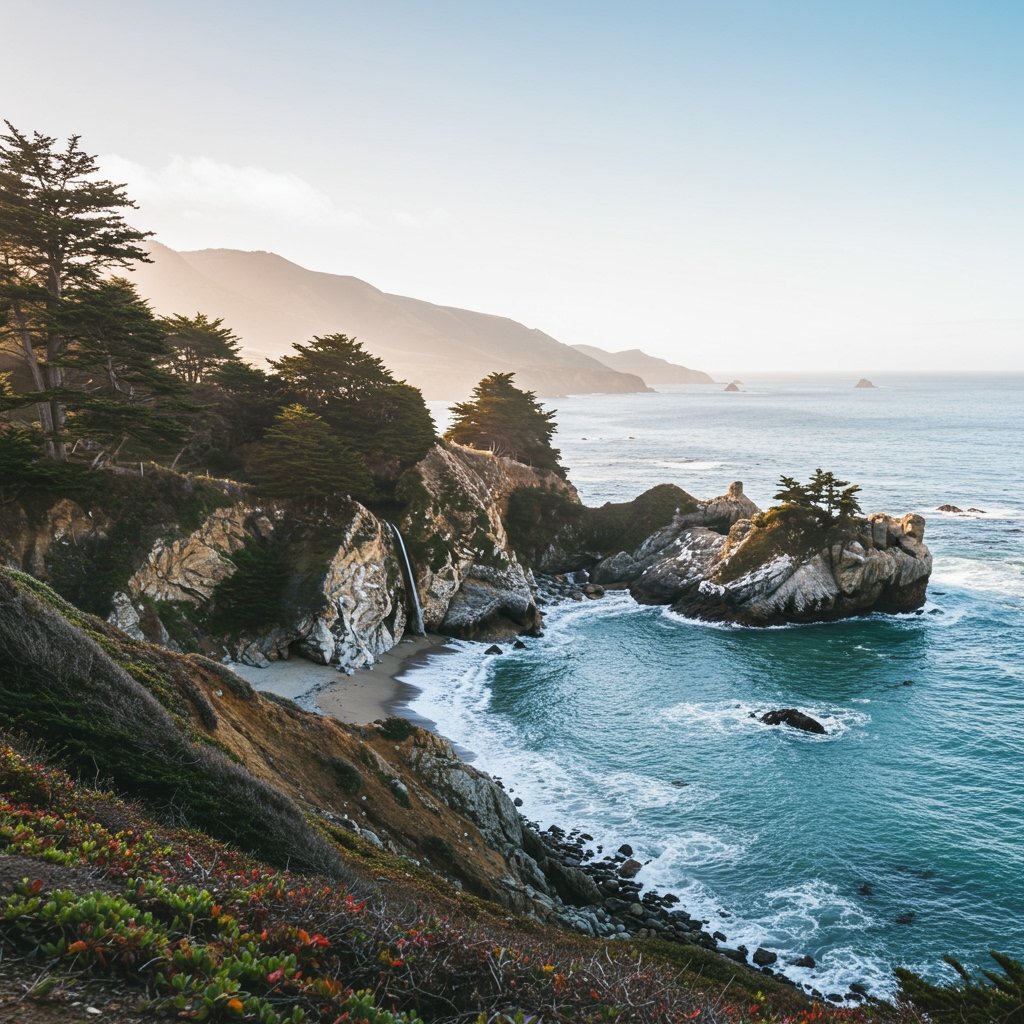Coastal Commission Tightens Development Rules in Big Sur
SACRAMENTO, CA – In a potentially landmark decision poised to significantly reshape the future of development along one of California’s most iconic stretches of coastline, the California Coastal Commission on February 26, 2025, voted to approve stringent new development regulations for the Big Sur region. The rules, years in the making and aimed at protecting the area’s unique environmental and scenic qualities in the face of accelerating climate change impacts, apply to a roughly 50-mile portion of the coast, extending from northern San Luis Obispo County northward through Monterey County to Carmel.
Passed by a decisive 9-3 vote during the commission’s monthly public hearing, the new regulations represent a significant tightening of the reins on construction and alteration projects within this ecologically sensitive and visually stunning area. The core components of the approved framework include mandates for significantly larger building setbacks from the bluff edge than previously required and the implementation of enhanced, more rigorous environmental review processes for virtually all new construction and major renovation proposals. These measures are directly targeted at mitigating the anticipated effects of sea-level rise and ensuring the preservation of irreplaceable public viewsheds that draw visitors from around the globe.
Rationale Behind the Stricter Rules
The commission’s decision was driven by growing concerns over the vulnerability of the Big Sur coastline to environmental changes, particularly coastal erosion exacerbated by rising sea levels and more intense storm events. Scientific projections indicate that the bluff edges along this segment of the coast are at increasing risk of instability and collapse, threatening existing structures and public infrastructure. By requiring larger setbacks, the commission aims to create a buffer zone, effectively pulling development back from these dynamic and receding edges, thus reducing the long-term risk to property and the environment.
Furthermore, the preservation of public viewsheds is a foundational principle of the California Coastal Act and a specific priority for the Big Sur area, designated as a State Scenic Highway and a National Scenic Byway. Uncontrolled or poorly sited development can obstruct the dramatic, unobstructed views of the Pacific Ocean and the rugged coastline that define the Big Sur experience for millions of visitors annually. The enhanced environmental review process will require developers to undertake more thorough studies of potential visual impacts, ecological disturbances, and geological hazards, ensuring that new projects are designed and sited to minimize their footprint and blend harmoniously with the natural landscape.
The Vote and Commission Dynamics
The 9-3 vote reflects the commission’s strong consensus on the urgent need for updated regulations in Big Sur, though the three dissenting votes indicate that some commissioners harbored reservations, potentially related to the scope, economic implications, or perceived feasibility of the rules. Deliberations leading up to the vote included extensive public testimony from a diverse array of stakeholders, including environmental advocates, local residents, property owners, business operators, and government representatives.
Commissioners supporting the measure emphasized the state’s responsibility to protect coastal resources for future generations and highlighted the scientific imperative presented by sea-level rise data. They argued that proactive measures, while potentially challenging in the short term, are necessary to prevent future disasters and irreversible environmental degradation. The dissenting commissioners did not immediately issue detailed statements explaining their votes, but discussions during the meeting touched upon balancing conservation goals with property rights and economic vitality.
Stakeholder Reactions: Praise and Concern
The approval of the new regulations was met with significant praise from environmental groups that have long advocated for stronger protections in Big Sur. Organizations such as the Surfrider Foundation and the Sierra Club hailed the decision as a crucial step forward in safeguarding one of California’s most treasured natural landscapes. They lauded the commission for prioritizing long-term ecological health and public access over development pressures, calling it a potential model for other vulnerable coastal areas facing similar challenges.
Conversely, the reaction from some local property owners and businesses within the affected 50-mile corridor was one of concern. Representatives for these groups voiced worries about the economic impact of the stringent rules, arguing that increased setback requirements could severely limit buildable area on many parcels, potentially diminishing property values and making new construction or significant improvements prohibitively expensive or entirely impossible. Tourism-dependent businesses expressed apprehension that development restrictions might stifle investment in hospitality infrastructure necessary to support visitors.
Concerns were also raised regarding the feasibility and cost associated with the enhanced environmental reviews, which could add significant time and expense to the development process. Critics suggested that the regulations, while well-intentioned, could create undue hardship for property owners and hinder responsible economic activity in the region.
Looking Ahead
The implementation of these new rules will require careful navigation and potential adjustments as projects come forward under the new framework. Local governments within the 50-mile stretch, including Monterey and San Luis Obispo Counties, will need to integrate these commission-approved regulations into their local coastal programs, subject to further certification by the Coastal Commission. The balance between rigorous environmental protection and the rights and economic interests of property owners will continue to be a subject of discussion and potential contention.
The decision on February 26, 2025, marks a significant pivot point in the management of development along the Big Sur coast. It underscores the state’s commitment to addressing the realities of climate change and preserving the area’s unparalleled scenic beauty and ecological integrity, setting a potentially high bar for coastal development standards statewide.



















